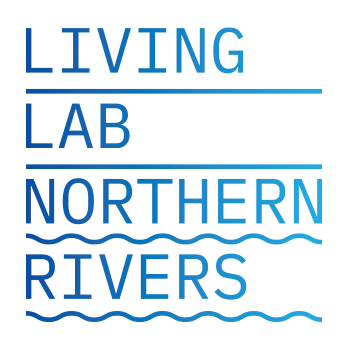
Co-designing a brighter future
by Elizabeth Mossop
Academic Director
Living Lab Northern Rivers
Looking across Gretna City Park, in New Orleans, there are wildflowers blooming all around, and flocks of native birds resting on the lake. It's a lovely spot, but the real beauty lies in the fact that this project provides 24 million litres of stormwater storage from surrounding streets and homes. The neighbourhoods here would regularly flood during big storms, but not anymore.
At Living Lab Northern Rivers, we know about these game changing solutions, because we helped create them, along with projects in Detroit, and New York, after Super Storm Sandy.
Now we're bringing this knowledge home with 'Look Ahead', a co-design process where we'll connect the best technical experts with the local community. Starting with a focus on Lismore’s CBD and surrounding neighbourhoods, the goal is to develop innovative plans for more regional towns, so everyone can thrive in uncertainty.
The Northern Rivers is like many places around the world that have gone through 'unprecedented disasters' in that government, businesses, institutions and people are struggling to find the best way forward in the aftermath.
Despite the incredible work done by individuals and grassroots organisations, there's not much tangible progress in regard to housing or plans for the future of our towns.
Lots of those affected by the floods are still looking for safe accommodation and employment, so the 'Look Ahead' process will focus on shelter, as well as economic resilience and opportunities for education, arts and culture.
From experience, we know the only way to develop successful plans for recovery and adaptation is by connecting engineers, designers, architects, First Nation land managers, and other top professionals with the local community so they can work on solutions together.
The co-design process starts with informal chats in the community, where we begin testing our assumptions about the current situation. Then there's some formal workshops and research, where we collect local knowledge, explore people's values and aspirations, and work through our understanding of the problems. And finally (hopefully) we end up with some solutions for a brighter future, not only for Lismore, but the region.
Living Lab Northern Rivers is holding two community workshops in February, which the public is warmly invited to attend. These will be followed by two expert design workshops in March, and final community meetings in May, so the public can review the outcomes.
Any ideas that come from 'Look Ahead' will be presented visually, with three-dimensional plans for the Lismore CBD and its surrounding neighbourhoods, so as many people as possible can have the same understanding of what's being proposed. This way we can have an honest conversation about the issues at hand, which aren't possible when proposals are theoretical or too technical.
These plans for a sustainable future will consider social and cultural issues, economic and business factors, plus environmental and ecological conditions. Thinking beyond recovery, we feel there's an opportunity for the Northern Rivers to build on our existing strengths, develop new opportunities, and be at the forefront of climate adaptation.
This confidence comes from our history. The Living Lab Northern Rivers team and our collaborators have done this before. In New Orleans, post-Katrina, we connected international experts with the local community and developed a plan to deal with their water through infrastructure. In Detroit, we helped with the renewal of devasted neighbourhoods by renovating housing and transforming abandoned land into parks, orchards and gardens. In New York, we provided advice to a design competition that ended up attracting over $4 billion to address resilience challenges.
Can you imagine a tomorrow where local knowledge, nature-based solutions, and green technology have combined to create revitalised and dynamic towns, known for their education and culture? If so, then come join us.
Let's look ahead together and come up with a new model for disaster and climate adaptation planning that can be shared across Australia.
